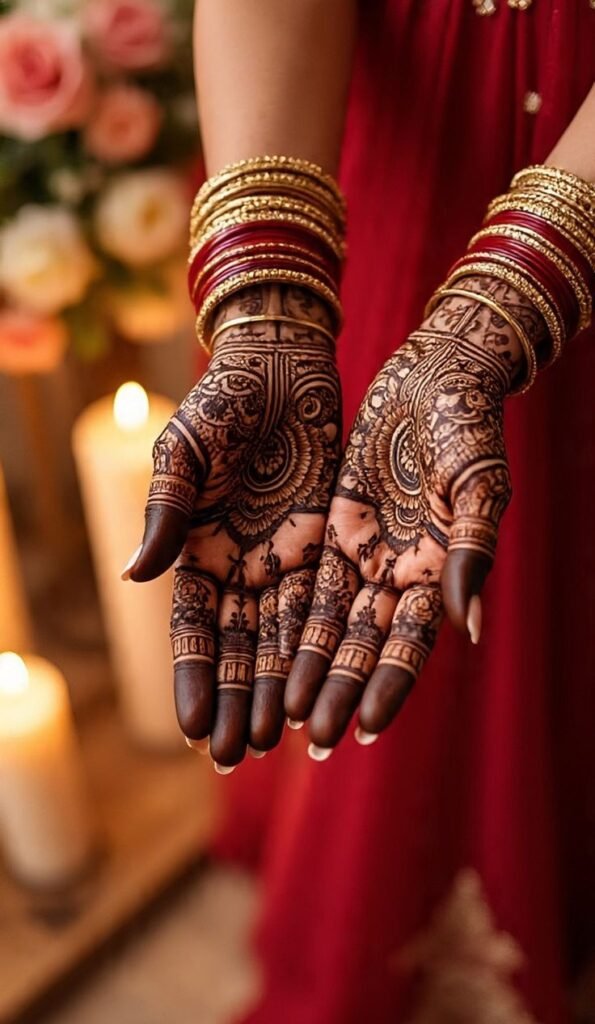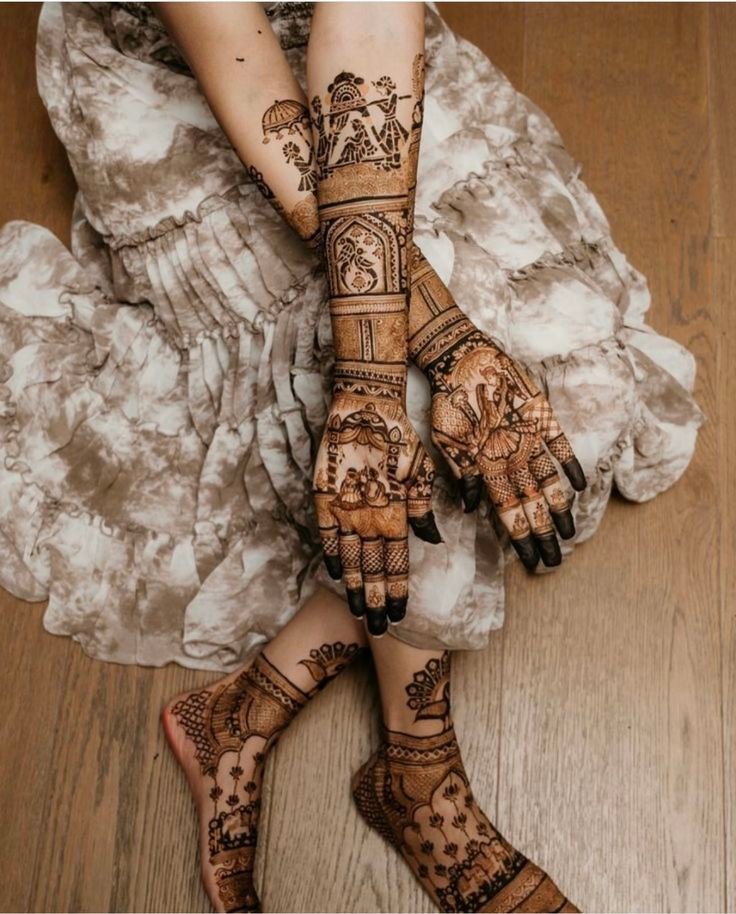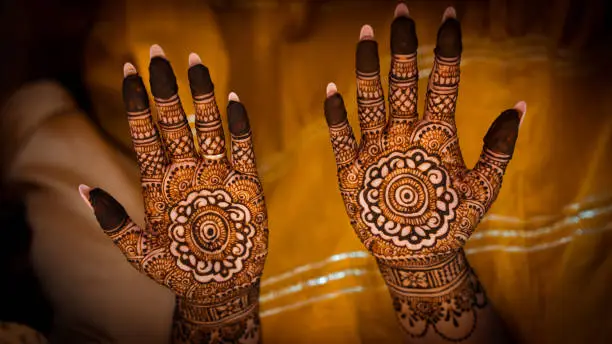Mehndi, also known as henna, has always been close to my heart. I still remember my first mehndi design during a family wedding it wasn’t perfect, but the fragrance, the excitement, and the compliments made me feel so special. Mehndi is more than just a pattern on the skin; it’s a tradition, an expression of joy, and a form of art passed down through generations.
In this article, I’ll share everything you need to know about mehndi designs—their types, cultural importance, trending styles, personal tips, and how to make them last longer.
The Cultural Significance of Mehndi Designs

mehndi design
In South Asian, Middle Eastern, and North African cultures, mehndi is a symbol of:
- Happiness and celebration (used in weddings, Eid, Diwali, and festivals)
- Good luck and blessings (especially for brides)
- Beauty and elegance (a natural form of body art)
For me, mehndi always brings memories of sitting with cousins, giggling, and waiting for our designs to dry during weddings. That shared bonding makes mehndi even more special.
Types of Mehndi Designs
There are many styles of mehndi, each with its unique charm.
1. Arabic Mehndi Design
- Bold, flowing patterns with large floral motifs.
- Often leaves spaces for a modern, minimal look.
- Great for quick yet stylish application.
2. Indian Mehndi Design
- Dense and detailed with peacocks, paisleys, and fine lines.
- Covers hands and arms beautifully.
- Perfect for brides who want an intricate look.
3. Pakistani Mehndi Design
- A fusion of Arabic boldness and Indian detailing.
- Balanced patterns with flowers, leaves, and domes.
- Elegant for weddings and festivals.
4. Moroccan Mehndi Design
- Geometric shapes, lines, and tribal-inspired patterns.
- Minimal yet artistic.
- Popular among young girls for casual wear.
5. Western/Contemporary Mehndi Design
- Simple, modern patterns inspired by tattoos.
- Includes hearts, initials, or mandalas.
- Perfect for those who want subtle beauty.
Simple Mehndi Designs for Beginners

mehndi design
Not everyone is a professional artist—but simple designs can still look stunning. Some easy ideas I tried when learning:
- Mandala on the palm – a circular pattern in the center.
- Diagonal floral trail – from finger to wrist.
- Leafy vines – wrapping around fingers.
- Finger-tip patterns – small dots and lines at the tips.
The beauty of mehndi is that even simple strokes can create elegant looks.
Bridal Mehndi Designs
Bridal mehndi is always the highlight of weddings. Brides usually go for detailed patterns that cover hands, arms, and feet. Popular elements include:
- Bride and groom portraits
- Wedding symbols (rings, flowers, mandap, doli)
- Intricate paisley and lace patterns
I remember my cousin’s bridal mehndi took almost six hours, but the result was breathtaking—it looked like a masterpiece on her skin.
Latest Mehndi Design Trends

Mehndi is evolving with fashion. Some of the latest trends include:
- Minimalist mehndi – small patterns on fingers or wrists.
- White mehndi – henna-inspired temporary tattoos in white.
- Glitter mehndi – adding glitter and stones for festive sparkle.
- Arabic + Western fusion – bold designs mixed with initials or hearts.
How to Make Mehndi Dark and Long-Lasting
A dark mehndi stain is something everyone loves. From personal experience, here are some tried-and-true tips:
- Wash hands before applying but avoid lotion.
- Leave mehndi for at least 5–6 hours (overnight if possible).
- Apply lemon and sugar mixture on drying mehndi for better color.
- Avoid washing hands with soap for 12 hours after removal.
- Warm your hands over steam (cloves on a pan works best) for deeper color.
These tips always helped me get that rich, dark bridal-like stain even for simple occasions.
Mehndi Design for Hands and Feet

Hands
- Front Hand: Bold floral or peacock designs.
- Back Hand: Bracelet-style or finger-focused patterns.
Feet
- Anklet Designs: Simple floral bands around ankles.
- Toe Rings Style: Small motifs on toes connected with vines.
During Eid, I always loved applying anklet-style mehndi on my feet—it felt festive yet elegant.
DIY Mehndi Design Tips
If you’re trying mehndi at home:
- Practice basic shapes (dots, lines, circles) on paper.
- Start small—design on fingers before full hands.
- Use a fine cone tip for better control.
- Look at references but add your own creativity.
- Be patient—perfection comes with practice.
Conclusion
Mehndi design is not just an art—it’s an experience filled with tradition, culture, and personal expression. Whether it’s a simple mandala on your palm, a bold Arabic trail, or an intricate bridal masterpiece, mehndi always adds beauty and meaning to special occasions.
From my own experience, every time I apply mehndi, it feels like carrying a piece of tradition and joy on my hands. And the best part? No two designs are ever the same—it’s always unique, just like our moments of celebration.
So, whether you’re a beginner or a bride-to-be, pick a design, try it out, and let mehndi tell your story.
FAQs about Mehndi Design
1. What is mehndi design?
Mehndi design is a form of body art using natural henna paste to create patterns on skin.
2. Which mehndi design is best for beginners?
Simple mandalas, floral trails, and finger-tip designs are easy and beginner-friendly.
3. How long does mehndi last?
Usually 1–3 weeks, depending on skin type and care.
4. What makes mehndi darker?
Leaving it longer, using lemon-sugar solution, and avoiding water initially helps.
5. Which mehndi style is most popular?
Arabic and Indian mehndi designs are among the most popular worldwide.
6. Can mehndi be applied on any skin tone?
Yes, mehndi works beautifully on all skin tones.
7. Is mehndi safe for kids?
Natural henna is safe, but chemical cones should be avoided.
8. How long does it take to apply a full bridal mehndi?
It usually takes 4–8 hours depending on the complexity.
9. What’s trending in mehndi design now?
Minimalist, glitter, and fusion mehndi styles are very trendy.
10. Can I make mehndi at home?
Yes, you can mix henna powder with water, lemon juice, and essential oils to make natural mehndi paste.
